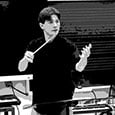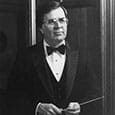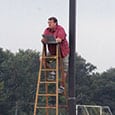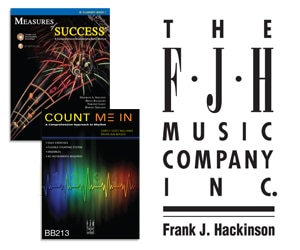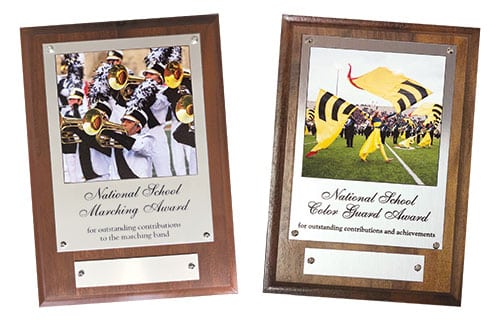We asked a range of conductors to share their first experiences as a conductor or another memorable experience in front of a group. As vivid and passionate responses came in, we started to think about other maestros we wish had contributed a story. They may get a chance in the near future.
Kim Bain
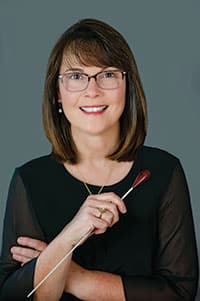
My first conducting experiences while working on my undergraduate degree in music education at the University of Alabama were pretty par for the course. However, while at Bowling Green State University persuing a graduate degree, I was lucky enough to be in a conducting class taught by Maestro Robert Spano. This was 1987, and Spano was the conductor of the BGSU Philharmonia and in charge of all opera activities. He was 26, and the students in the class ranged from ages 22 to 24.
I was a band kid from Alabama who arrived at graduate school with zero experience in orchestral conducting. Funding for school orchestras in my home state was less than stellar back then, and it is not much better today. Nonetheless, my conducting experiences with Professor Spano were inspirational, and studying with someone of his caliber instilled in me feelings of both fear and exhilaration. I still look back on that conducting class with great fondness.
At Bowling Green, Maestro Spano already had the reputation of a musical titan. Following his time as a young professor there, his career blossomed, and he became an American orchestral conducting superstar, including spending more than two decades as music director of the Atlanta Symphony Orchestra.
I will never forget the first week of class. We were all required to come up to his piano and perform an open score reading exercise in front of the class. This consisted of singing one of the voices of a four-part Bach chorale while playing the other three voices on piano. The score was written in soprano, alto, tenor, and bass clef. While an undergraduate student, I had great success in class piano at The University of Alabama, but I had never performed or done anything like this before. Professor Spano took mercy on me and allowed me extra time for other open score reading assignments.
My most vivid memory from the class is our final exam. We were required to conduct the student orchestra, the BGSU Philharmonia, in a performance of an arrangement written by a student from the undergraduate arranging/orchestration class. Luckily, Professor Spano took mercy on me, and I was assigned one of the better arrangements. I conducted the Philharmonia performing a transcription of Debussy’s Estampes (Movement 1. Pagodes). This was my first time in front of an orchestra, and I loved every minute. I remember Professor Spano videotaping us as we conducted, and I so wish I could find that old VHS tape.
I learned so much during that short semester with Maestro Spano, and I’m sure I never thanked him as I should have. I’m just so grateful to have had the opportunity to study with him, and I will always remember my first experience on the podium in front of an orchestra – all thanks to him.
Kim Bain retired after 34 years of teaching in 2021 from Louis Pizitz Middle School in Vestavia Hills, Alabama. Ensembles under her leadership were consistently cited for musical excellence at both the state and national levels. Her band performed at the Midwest Clinic in 2015. She is currently teaching saxophone at Samford University and is an active freelance musician in Birmingham, Alabama.
Gregory Whitmore
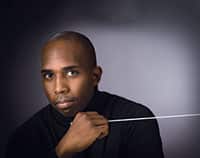
I have several fond memories of my first conducting experiences. As a child, my parents purchased cassette tapes of classical music for me to listen to (these were compilation recordings of well-known symphonies one could purchase at a big box store). I remember my early conducting experiences consisted of sitting in my bedroom and listening to those cassettes. I used a wooden pencil as my baton as I conducted the music of Mozart and Beethoven. I had no idea about conducting formally; however, I vividly remember feeling successful in these early childhood efforts.
Recalling my first conducting experiences in front of a live ensemble, I think back to my senior year of high school as Drum Major of the marching band (Belleville High School, Michigan). I remember learning my conducting beat patterns and studying the scores and publisher recordings of my high school marching band’s field show for that football season.
I also remember my first time conducting the band on the podium on the field at our annual summer band camp. Admittedly, I was nervous, and I remember calling the band to “horns up” and then counting the band off to start playing. Then, they actually started playing. It was an exhilarating experience to collaborate with my peers in music-making on the marching field.
I was also fortunate and honored to be the Drum Major of the University of Michigan Marching Band for two seasons while I was in college at Michigan. While I spent most of my performance time with the MMB baton twirling and adding to the on-field performance elements of the MMB’s halftime shows, I conducted the Michigan Marching Band in the stands with a few pep tunes. Standing in front of a band of that magnitude and musical ability in Michigan Stadium (“The Big House”) is something I will not ever forget.
As an undergraduate Music Education Major at The University of Michigan, I had a memorable experience in conducting “serious music.” The culminating activity in our undergraduate conducting class was to lead the University of Michigan Concert Band in one movement of Ralph Vaughn William’s English Folk Song Suite. The class studied the score throughout the semester, refining our conducting skills and technique, all leading to the day when we would step to the podium to lead the band in our selected movement. I vividly remember my baton shaking from nerves. I remember giving the downbeat (I selected Movement 1), and upon hearing the band playing those opening measures, I thought, “Wow, they are actually playing to my conducting!”
While I was terribly nervous, the conducting experience felt like it went by quickly, and when I sat down after my conducting round, I remember feeling a rush of excitement, while simultaneously wanting a chance to conduct again. As a college band director, I have conducted English Folk Song Suite several times, and each time I revisit that wonderful piece, I recall that first conducting experience.
Gregory Xavier Whitmore is Conductor of the University Symphonic Winds at California State. University Fullerton (CSUF). Whitmore is an Associate Professor of Instrumental Music Education, and serves as Area Coordinator of the CSUF Music Education Department. He is in his 11th season as Music Director of the Pacific Symphony Youth Wind Ensemble.
James Popejoy
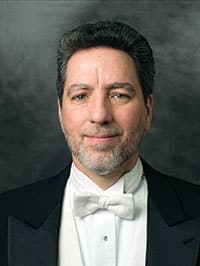
I decided in the eighth grade that I wanted to be a band director. I didn’t really know what that entailed, but I was excited about the things I did know, and that included this conducting. I was selected as one of the student conductors in my band and given the opportunity to lead the ensemble during warm-ups. I was hooked! After directing my high school pep band and conducting string orchestra sectionals, my first real conducting experience occurred when I was given the opportunity to conduct the collegiate Percussion Ensemble while an undergraduate music education major. The percussion instructor recognized my interest in conducting and provided me the invaluable experience of exploring the process of rehearsing and conducting an ensemble.
After teaching four years at my first high school band job, my growing interest for conducting led me to apply to a graduate school conducting program, a fairly new option at that time. The rest is history as my love for the art of conducting continues to flourish to this day as a university conductor and instructor of conducting.
James Popejoy is Director of Bands and Professor of Music at the University of North Dakota. In his 44th year of teaching at the public school and collegiate level, he earned degrees in music education and conducting from Central Missouri State University, the University of Iowa, and the University of North Texas.
Melissa Gustafson-Hinds
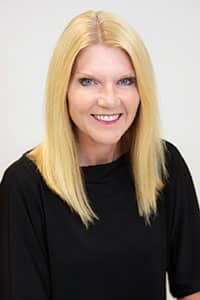
As a music educator, I am very blessed to have had the opportunity to conduct at the 2022 Midwest Clinic. The previous year we had an excellent group of students and thought applying would be a great learning experience for us as teachers and for the program as a whole. James Keene was a mentor during this process and assisted in coaching me on clarity and musicianship. In addition, I had several mentors guiding me as much as I needed.
Because this experience was new to our program, the kids didn’t feel the same pressure as the directors. I remember standing backstage (on the side) as students settled in their seats for the final time, and we were preparing for the introductory announcement. I reminded myself to remain calm and positive for the kids and give them that energy of strength and “O’Fallon love and family.” After walking on stage, I looked at each of them in the face before the first downbeat. Once the concert began, we were able to relax and feed off the positive energy in the room and the supportive applause.
As teachers and conductors, we always have to remember that we need to be there for our students and lead them down the path of positive experience, whatever it may be for your program.
Melissa Gustafson-Hinds is in her 17th year as Director of Bands at O’Fallon Township High School in Illinois. In addition to her teaching duties, She serves as Performing Arts Department Chair at OTHS and the Illinois Music Educators Association Band Division President. She holds degrees from Illinois State University, University of Illinois at Urbana-Champaign, and the University of Missouri – St. Louis. She has been teaching in Illinois public schools for 31 years.
Thomas Trimborn
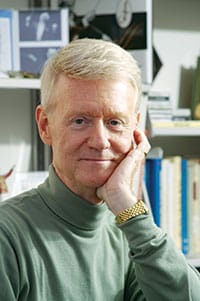
In 1958, Leonard Bernstein presented the first of his televised Young People’s Concerts, and I was instantly hooked. I wanted to be a conductor just like him. At that time, I was in 7th grade playing trombone in the band and eventually got up the courage to ask my band director to teach me how to conduct. To my relief, he readily agreed to spend part of my weekly private trombone lesson demonstrating the patterns.
Once I had learned the basics, back in my bedroom with the stereo cranked up, I became Bernstein, Reiner, Ormandy, or Toscanini practicing my conducting patterns to music played by the greatest orchestras in the world. I was told that I had a natural arm. By the time I was in ninth grade, I asked if I could conduct the band. Again, my director agreed.
We were preparing for the spring concert, and a Spanish overture entitled Ensenada by Joseph Olivadoti was on the program. My director thought it would be a good choice for me. He gave me the score and told me to prepare. I was excited and nervous, but couldn’t wait for the upcoming rehearsal. The day arrived, and there I was standing on the podium. I gave the downbeat and amazingly we played through the entire piece with no stops. I had no idea of how to rehearse, but my director made some suggestions of things that needed work and kept me up there for the rest of the period.
Afterwards, I was not only pleased with how everything turned out that day, but knew I wanted be a conductor. As it turned out, I conducted that piece on the concert which was icing on the cake – this time not only on the podium in front of the band but appearing before an audience as well. Later that month by the time graduation day arrived and it was time to move on to high school, I was known as “Mr. Ensenada” when introduced to receive the John Philip Sousa Band Award.
Thomas Trimborn retired from Truman State University as Professor Emeritus of Music after 45 years as a high school band director and university instructor/administrator. He earned his PhD from Northwestern University and MM and BFA degrees from the University of Wisconsin- Milwaukee.
Sean O’Loughlin
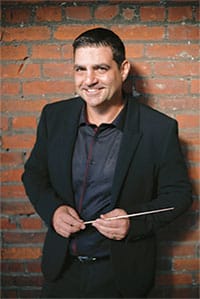
My first time conducting was as a student with the Syracuse University orchestra during a rehearsal. Our conductor wanted to go out in the hall and hear the ensemble, so he asked me to conduct Tchaikovsky’s Romeo and Juliet (Fantasy Overture). I had been studying conducting in my music education classes, but had never had a chance to lead a full orchestra like this. I felt calm and excited at the same time.
From the first delicate chords in the woodwinds, to the powerful brass entrances and the famous sweeping melody, I was instantly hooked. To feel the power and the interaction of the players with me was truly special. A few players commented on the heightened level of playing during that reading. It made me understand the true power that a conductor can have on a performance.
Along with the usual tempo and dynamic indications, I was able to show emotions in my conducting. Learning how to show all of that without simply beating a pattern was a good lesson too. Cueing the various entrances and important passages allowed me to connect with the players on a deeper level. It was an important moment for me.
As Principal Pops Conductor of the Syracuse Orchestra and the Victoria Symphony, I continue to bring some of those early lessons and experiences with me. I have also been blessed to have conducted several major orchestras in my career, including the Boston Pops Orchestra just this last summer at Tanglewood.
I had a full circle moment just last year, when I conducted excerpts from Tchaikovsky’s Romeo and Juliet Overture as part of a love-themed pops show. I was instantly transported back to that first time and couldn’t help but smile from ear to ear.
Sean O’Loughlin is the Principal Pops Conductor of the Syracuse Orchestra and the Principal Pops Conductor of the Victoria Symphony in B.C., Canada. His diverse background includes collaborations with some of the leading symphonies and popular artists of today. These artists include the Boston Pops Orchestra, the Chicago Symphony, Josh Groban, Sarah McLachlan, and The Decemberists.
Randall Coleman
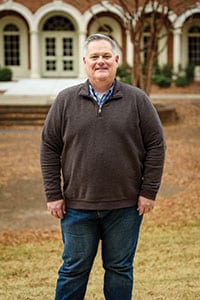
As a 16-year-old junior in high school, my choral director selected me as the student conductor for our chorus. She was my idol and role model. I wanted to be just like her someday. She made a group of untrained high school students from a small, rural high school in Alabama believe that they could do anything. She was a strict taskmaster, and we all were careful to be doing what we were supposed to do, or we would get “the look” from her.
I conducted an arrangement of I’ll Be Home for Christmas with our choir on the holiday concert. My first experience in front of a musical ensemble. I was extremely nervous, but as the piece began, I eased into the moment and enjoyed the music and the message it conveyed. My most poignant memory is looking in the direction of my teacher near the end of the piece and seeing her wipe a tear from her eye. From that moment on, I knew this was what I wanted to do with my time as a teacher and conductor. I wanted music that I shared with my ensemble to have meaning, and I wanted it to have an impact on the listener’s experience.
I won’t ever be able to repay my high school teacher for the impact she has had on my life, both professionally and personally. I am fortunate to still be able to reach out to her to hopefully remind her of that. Music is indeed a powerful tool that we share across generations. I have been a high school and university band director for 42 years now, thanks to the impact that my high school choral director continues to have on me to this day.
Randall Coleman is Director of Bands and the Frances Hall Hill Professor of Music at the University of Tennessee at Chattanooga. He also teaches conducting and band organization classes, along with graduate classes in conducting, wind band literature and history. He previously was Associate Director of Bands and Professor of Music at the University of Alabama for 14 years.
Robert E. Foster Jr.
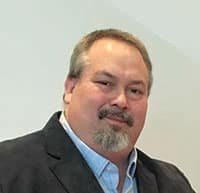
During my undergraduate years, I was a music tech helping high school bands and running sectionals for the Marching Jayhawks trumpet section. These opportunities all provided me with a little experience to figure out how to lead an ensemble. I completed my bachelor’s degree in music education from the University of Kansas and upon graduation started my master’s degree at the University of Illinois.
I vividly remember my first conducting opportunity in front of an audience. James Keene, Gary Smith, and Cody Birdwell were the Illinois band directors. As a graduate student, I was given the opportunity to conduct the 350 member Marching Illini on a concert in the Quad. When it was my turn, I climbed up on the center ladder to conduct Boogie Down and provided the whistle commands to start the song. Midway through, I noticed my knees were shaking out of control – I was terrified! When I climbed down the ladder, one of the directors asked me what I thought. I told them it was awesome, but also scary. This is the only time I ever played buzz rolls, with my knees against the ladder!
Robert E. Foster, Jr. is the band director at Lexington Trails Middle School and Starside Elementary School in De Soto, Kansas. He has taught in the Kansas public schools and at the college level over the last 29 years. He is a Dr. William P. Foster Award of Excellence recipient.
